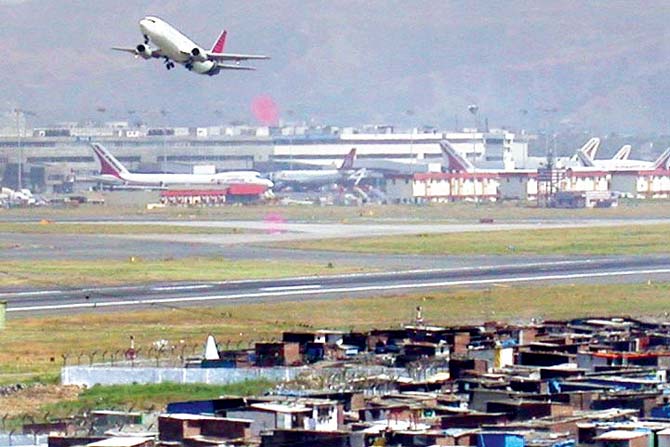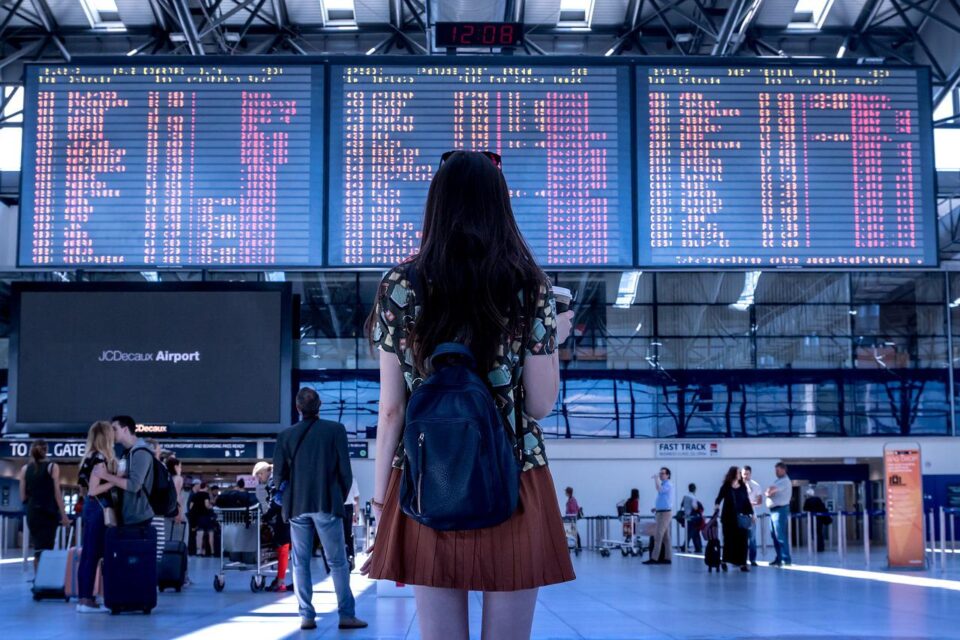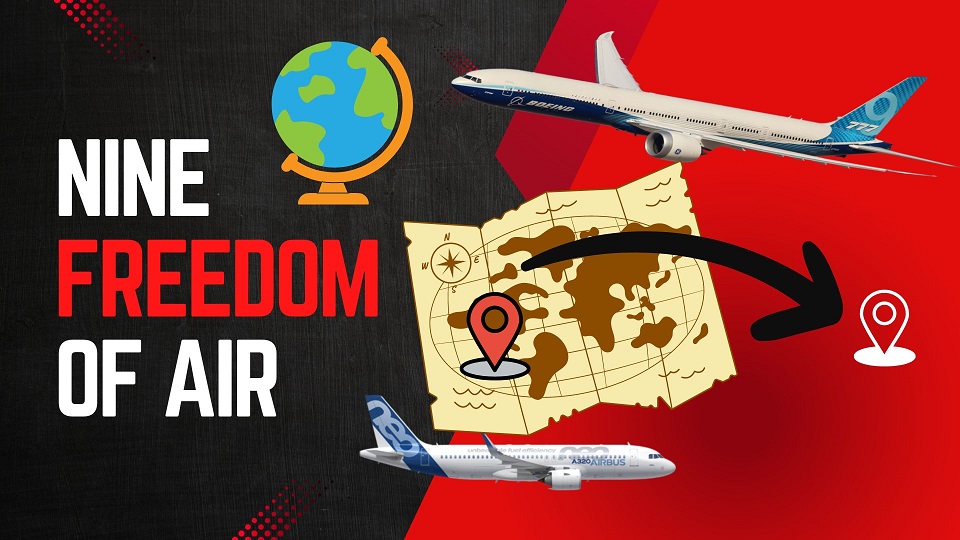Aviation
Mumbai crowned world’s busiest single-runway airport with 1 flight in 65 seconds

Mumbai: The GVK group-run Mumbai airport has become the world’s busiest amongst the single-runway facilities by handling 837 flights a day or one in 65 seconds on an average in fiscal 2017, taking over London’s Gatwick airport that had 757 flights a day.
In terms of the number of passengers also, the city airport tops with 45.2 million people flying in and out in fiscal 2017 as against 44 million at Gatwick airport. Notably, no other large city in the world is served by one airport, that too with a single-runway.
Besides, illegal squatters occupy nearly one-third of the airport land. The second airport proposed in Navi Mumbai is yet to come up. All the leading cities like New York, London, Dubai, and Singapore have more than one airports with multiple runways. The New Delhi airport has three parallel runways in use at any given time. As against this, Mumbai has to make do with a single runway (09/27) for all passenger and cargo aircraft and when it is shut for repairs, it uses the secondary runway (1432).
In terms of aircraft movement in a day, the city airport had one plane take-off or landing in 65 seconds, which means it handled on an average 48 flights, peaking at even 52 movements at times, making it the busiest in the world on both the counts, an airport spokesperson said.
The ATC (air traffic controller) thus has to manage two arrivals every 130 seconds and one departure in between these two arrivals. So there is one take-off or touch-down every 65 seconds from the main runway. That means the land-starved airport handled a whopping 837 flight movements a day, which on an average is 80 flights more than Gatwick handling 757 movements in a day, the spokesperson said. There are days when the number crosses even 900 movements a day, she said.
However, the Delhi airport handles much larger number of passengers. At 45.2 million, Mumbai handled only 18.6 per cent of the total air traffic in the country while the Delhi airport handled 57.7 million passengers or 21.6 per cent of the total air traffic in the country in fiscal 2017. Out of the 45.2 million passengers at the Mumbai airport, 12.4 million were international travellers.
The airport’s originally envisaged capacity is only 40 million passengers. Mumbai currently has an extensive network that takes passengers to over 95 domestic and international destinations. In fiscal 2017, the city airport logged in an 8 per cent growth in volume over fiscal 2016. When the GVK group took over the operations of the airport in fiscal 2006, it handled just 18 million passengers.
By handling 44 million passengers, Gatwick airport in the British capital was delegated to be the world’s second busiest airport with single-runway operations, a position it held for many years. However, it lost the position to Mumbai in fiscal 2017 which handled 45.2 million passengers between April 2016 and March 2017, the airport spokesperson said. “From around 453 aircraft movements a day in 2006, we have grown to handle over 800 movements daily, handling over 45.2 million last financial year.
In terms of cargo shipments, we have grown from 5,32,000 tonne in fiscal 2008 to 78,29,000 tonne in fiscal 2017,” she said. Recently, the city airport welcomed two Airbus A350-900 that resulted in it becoming the only airport in the country to handle daily operations of two of the world’s most advanced premium passenger aircraft, the spokesperson said.
“To augment operational efficiency, we are expediting a host of projects and initiatives including constructing rapid exit taxiways, widening runways and taxiways and improving airspace management, helping us seamlessly accommodate an increasing traffic,” she said.
“Currently, work is on to connect the taxiway to runway 27 which can provide the much-required additional holding area for aircraft ready to take off on the main runway,” the spokesperson added.
Source : Live mint

Airlines
US DOT says Airlines must now pay automatic refunds for cancelled flights

The U.S. Department of Transportation (DOT) has released a final regulation requiring airlines to quickly reimburse passengers with automatic cash refunds when owed, according to a statement made by the Biden-Harris Administration.
Under the new regulation, passengers will find it easier to get refunds when airlines dramatically alter or cancel flights, cause severe delays for checked baggage, or don’t supply the additional services they paid for.
According to a statement from the Biden-Harris Administration, the U.S. Department of Transportation (DOT) has published a final rule mandating airlines to promptly compensate customers with automatic cash refunds when they are eligible. The new rule would make it simpler for customers to receive refunds from airlines in cases when they drastically change or cancel flights, cause significant delays for checked luggage, or fail to provide the extra services they charged for.
Under the latest rule from the USDOT, passengers are guaranteed refunds in several scenarios:
- Canceled or Significantly Changed Flights: Passengers are entitled to refunds if their flight is canceled or significantly altered, including changes in departure or arrival times exceeding 3 hours domestically or 6 hours internationally, departures or arrivals from different airports, increased connections, downgrades in service class, or changes less accommodating to passengers with disabilities.
- Delayed Baggage Return: Passengers filing mishandled baggage reports can claim a refund for checked bag fees if their luggage is not returned within specific timeframes after flight arrival.
- Unprovided Extra Services: If airlines fail to deliver paid extra services like Wi-Fi, seat selection, or inflight entertainment, passengers can request refunds for those fees.
The final rule streamlines the refund process, ensuring it is:
- Automatic: Refunds are issued automatically without requiring passengers to request them.
- Prompt: Airlines must refund credit card purchases within seven business days and other payment methods within 20 calendar days.
- In Original Form of Payment: Refunds are provided in the original payment method used for purchase.
- Full Amount: Passengers receive full refunds minus the value of any portion of transportation already used, including government and airline fees.
Suggest banning family seating junk fees and ensuring that parents can travel with their kids at no additional cost. No airline promised to ensure fee-free family seating prior to efforts from President Biden and Secretary Buttigieg last year. Family seating is now guaranteed free of charge on four airlines, and the Department is working on a plan to eliminate family seating junk fees.
Propose to make passenger compensation and amenities mandatory so that travelers are taken care of when airlines cause flight delays or cancellations.
Airlines
The Nine Freedoms of the Air – Jetline Marvel

Most of us travel from one city to another city via road we need to get permission to that specific city if it is in another country like a visa or Road access permission to use its property for revenue purposes to carry passengers and Cargo. Similarly, In the airline Industry, it is also important that the Company have permission to fly and access that country whether it’s for stoppage flying above them, or Operating the passengers within that country This is called Freedom of the Air.
Some countries together they agree with certain conditions to access their Aerospace for to access for the airline to travel above their nation. If the bilateral is done for Their own countries’ airlines or other countries’ airlines. In this chapter, we understand how this thing is carried out. What all the condition has to look into that.
The Freedoms of the Air are international commercial aviation agreements (traffic rights) that grant a country’s airline(s) the privilege to enter and land in another country’s airspace. They were formulated in 1944 at an international gathering held in Chicago (known as the Chicago Convention) to establish uniformity in world air commerce. There are generally considered to be nine freedoms of the air.
Most nations of the world exchange first and second freedoms through the International Air Services Transit Agreement. The other freedoms,chase freedom airline miles when available, are usually established between countries in bilateral or multilateral air services agreements. The third and fourth freedoms are always granted together. The eighth and ninth freedoms (cabotage) have been exchanged only in limited instances
First Freedom:
The basic permission granted to an airline from one country (A) to fly through the airspace of another country (B)
Second Freedom:
The permission for a commercial airplane from country (A) to land and refuel (often called a technical stop) in another country (B).
Third Freedom :
The privilege for an airline to transport paying (Revenue) passengers from its home country (A) to another country (B).
Fourth Freedom
The rights for an airline to transport paying (Revenue )passengers from another country (B) to the airline’s home country (A).
Fifth Freedom
Fifth Freedom (also known as beyond rights): The rights for an airline to transport passengers from its home country (A) to a destination (B), then pick up and carry passengers to other international destinations (C).
Sixth Freedom:
Sixth Freedom (Combination of Third & Fourth Freedoms) The right for an airline to carry passengers or cargo between two foreign countries (B and C), provided the aircraft touches down in the airline’s home country (A).
Seventh Freedom:
The authorization for an airline to operate flights that start in a foreign country (B), skip its home country (A), and transport passengers to another international destination (C).
Eighth Freedom Air
The rights for an airline to transport passengers from one location within a country’s territory (B) to another point within the same country on a flight originating in the airline’s home country (A). This right is commonly referred to as cabotage and is notably scarce outside of Europe.
Ninth Freedom Air
The entitlement for an airline from a specific country (A) to begin a flight in a foreign country (B) and transport passengers from one location to another within that foreign country. This concept, also referred to as stand-alone cabotage, distinguishes itself from the traditional aviation definition of cabotage by not directly involving the airline’s home country.
Aviation
Air India’s B747 Makes Its Final Journey, Waving Farewell to Fans

In a poignant moment marking the end of an era in aviation history, Air India’s iconic Boeing 747 aircraft, affectionately known as the ‘Queen of the Skies,’ embarked on its ultimate journey from Mumbai’s international airport.
The departure, bound for Plainfield, USA, where it will undergo dismantling and part-stripping under the ownership of American AerSale, signals the closure of a storied chapter for the airline.
Once revered for transporting dignitaries ranging from prime ministers to presidents, the Boeing 747 has etched itself into aviation lore. Yet, as airlines worldwide pivot towards more contemporary and cost-effective aircraft, Air India’s decision to bid farewell to its remaining Boeing 747s reflects the pragmatic realities of today’s aviation landscape.
The sale of these majestic planes to AerSale represents a strategic move by Tata Group, Air India’s new custodian, towards optimizing operational efficiency and embracing modern industry standards. Out of the four aircraft sold, two will be repurposed into freighters, while the remaining pair will be meticulously disassembled to salvage valuable components.
The final flight from Mumbai witnessed a touching tribute as pilots performed a traditional ‘Wing Wave,’ symbolizing the conclusion of the Boeing 747‘s distinguished service with Air India. This poignant gesture encapsulates the deep sentiment attached to the aircraft’s departure and its significant contribution to the airline’s legacy.
As the Boeing 747 embarks on its journey to Plainfield, USA, nostalgia permeates the air, evoking memories of its maiden flight on March 22, 1971. Over five decades, Air India operated a total of 25 Boeing 747s, each leaving an indelible mark on the annals of aviation history.






























